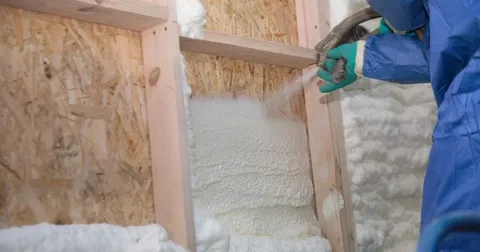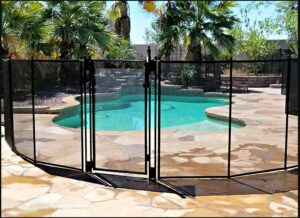Why Builders in Wichita, KS Are Choosing Spray Foam Insulation for New Homes
When building new homes in Wichita, KS, selecting the right insulation is one of the most important decisions impacting long-term energy efficiency, comfort, and durability. Increasingly, local builders are turning toward spray foam insulation because of its superior thermal resistance, air sealing capabilities, and durability compared to traditional materials like fiberglass and cellulose.
Spray foam insulation offers a modern solution that not only meets today’s higher energy codes but also improves the overall quality and value of new homes. In this guide, we’ll explore the major reasons why spray foam is becoming the top choice, compare it to other insulation types, and outline key considerations for builders and homeowners alike.
Why Spray Foam Leads in New Home Construction
Spray foam insulation stands out for several compelling reasons that align with the needs of both builders and homeowners:
- Exceptional Air Sealing: Traditional batt insulation leaves gaps that allow for unwanted air exchange, while spray foam tightly seals nooks and crannies, preventing drafts and energy loss.
- High R-Value per Inch: R-value measures insulation’s resistance to heat flow. Spray foam’s high R-value ensures better thermal performance in thinner walls.
- Moisture Control: Spray foam’s closed-cell version acts as a barrier against water intrusion, reducing risks of mold, mildew, and wood rot.
- Structural Support: Closed-cell spray foam increases wall and roof strength, providing additional resilience against Kansas’s variable weather patterns.
In new home construction, these factors translate to lower energy bills, better indoor comfort, and greater long-term durability—critical selling points for new buyers.
Understanding Different Insulation Materials
Builders have several insulation options, but spray foam offers unmatched advantages when compared side-by-side.
| Insulation Type | Key Benefits | Common Drawbacks |
| Spray Foam | High R-value, superior air sealing, moisture resistance, structural strength | Higher upfront cost, professional installation required |
| Fiberglass Batts | Economical, widely available, easy DIY installation | Prone to gaps, lower R-value, poor air sealing |
| Cellulose | Eco-friendly (recycled materials), good sound dampening | Settles over time, absorbs moisture, risk of mold |
Unlike batt or blown-in options, spray foam insulation acts as a thermal, air, and moisture barrier all in one application. Builders looking for long-term performance find this multi-functionality appealing.
What Sets Spray Foam Apart
| Attribute | Spray Foam | Fiberglass | Cellulose |
| R-Value per Inch | 6.0–7.0 (closed-cell) | 2.2–2.7 | 3.2–3.8 |
| Air Seal Rating | Excellent | Poor | Moderate |
| Moisture Resistance | High | Low | Low |
| Lifespan | 30+ years | 10–25 years | 20–30 years |
| Soundproofing | High (open-cell) | Moderate | High |
Bonus Tip: Builders aiming for Net Zero Energy Homes often start with spray foam to ensure building envelopes are tight enough to support high-efficiency HVAC systems and renewable energy systems like solar panels.
Key Factors for Insulation Selection in New Homes
1. Wichita’s Variable Climate Demands Superior Insulation
Kansas experiences hot, humid summers and cold, dry winters, placing year-round demands on home energy systems. Traditional insulations often underperform due to gaps and moisture intrusion. In contrast, spray foam’s tight seal ensures homes stay comfortable across all seasons.
2. Energy Efficiency Targets
Modern homeowners increasingly seek energy-efficient, sustainable homes. Builders responding to this trend know that achieving high energy ratings (such as HERS Index Scores) often depends on minimizing thermal leaks.
Market Fact:
According to the U.S. Department of Energy, homes that use advanced air sealing and high-efficiency insulation can see heating and cooling cost reductions of up to 30%.
Spray foam offers one of the most effective methods to achieve these savings.
3. Long-Term Financial Value
While spray foam requires a higher initial investment, the total cost of ownership is often lower due to:
- Reduced energy bills
- Fewer maintenance issues
- Improved indoor air quality
- Longer material lifespan
For builders, offering spray foam insulated homes provides a competitive advantage by marketing long-term savings to buyers.
Bonus Tip: New homes insulated with spray foam often command higher resale values because of their documented energy performance.
Things to Consider Before Choosing Insulation
Choosing insulation is more than comparing R-values. Builders and homeowners should weigh these important factors:
Ventilation Strategy
Spray foam creates a tightly sealed building envelope. While this improves energy efficiency, it also requires mechanical ventilation (like ERVs or HRVs) to ensure healthy indoor air quality.
Building Codes and Compliance
Wichita and the surrounding areas enforce modern building codes focusing on energy conservation. Ensuring compliance often favors high-performance materials like spray foam.
Local Rebates and Incentives
Energy-efficient homes may qualify for financial incentives from utility companies or government programs. Builders and homeowners should check local options to help offset insulation costs.
HVAC System Right-Sizing
Homes insulated with spray foam often require smaller HVAC units. Oversized systems may short-cycle, leading to higher costs and decreased comfort.
Bonus Tip: Always involve an HVAC specialist early when planning to use spray foam insulation, to correctly size systems for maximum efficiency.
Common Homeowner Questions
Before committing to spray foam, homeowners often ask:
- Will my home become too airtight?
With proper ventilation systems, spray foam improves air quality and efficiency without risks. - Is spray foam safe?
Once cured, spray foam is chemically inert and poses no indoor air quality risks under normal living conditions. - How quickly will I see energy savings?
Most homeowners notice immediate reductions in heating and cooling costs after moving in. - What happens if there’s a leak in the roof?
Closed-cell spray foam resists water absorption, minimizing potential damage compared to traditional insulation.
Understanding these common concerns helps smooth the decision-making process for builders and buyers alike.
Frequently Asked Questions About Home Insulation
Q1: How long does spray foam insulation last?
Spray foam can maintain its insulating properties for over years when installed properly, often outlasting other materials.
Q2: Is spray foam environmentally friendly?
While manufacturing involves chemicals, spray foam significantly reduces a home’s carbon footprint by lowering energy use over decades.
Q3: How does spray foam compare in soundproofing?
Open-cell spray foam offers excellent sound absorption, making it ideal for interior walls and media rooms.
Q4: Can spray foam insulation help with moisture problems?
Yes. Closed-cell spray foam acts as a vapor barrier, helping protect against mold, mildew, and structural decay.
Q5: What’s the best time to install spray foam insulation?
Spray foam is best applied during new construction when walls are open, ensuring complete coverage and easier application.
Finding the Right Insulation Expertise
In Wichita’s challenging climate, choosing the right insulation can mean the difference between a home that struggles with comfort and one that stays efficient and cozy for decades. Spray foam insulation offers unmatched performance across energy savings, comfort, and durability — making it a smart choice for builders and homeowners focused on quality and sustainability.
For those seeking professional guidance or expert installation services, Arma Coatings of Wichita, a provider specializing in high-performance spray foam insulation for new homes, offers tailored solutions backed by local experience and expertise.
Readers can learn more about Arma Coatings of Wichita’s services:
Company: Arma Coatings of Wichita
Phone: (316) 779-2430
Email: sales@armacoatingswichita.com
Learn more about Arma Coatings of Wichita’s spray foam solutions













